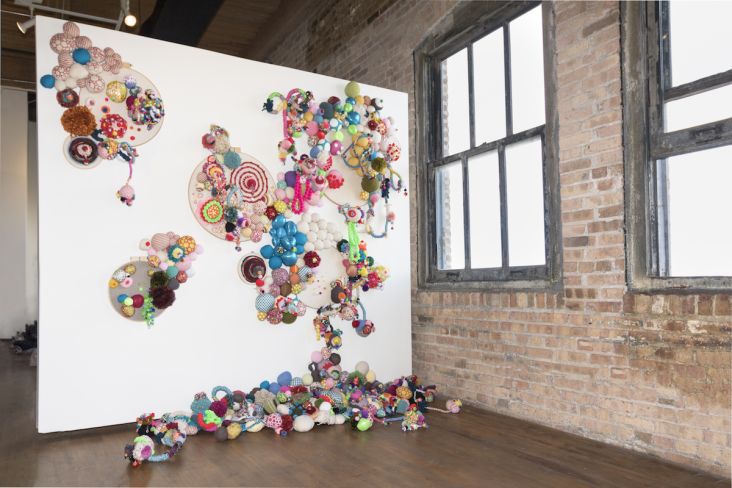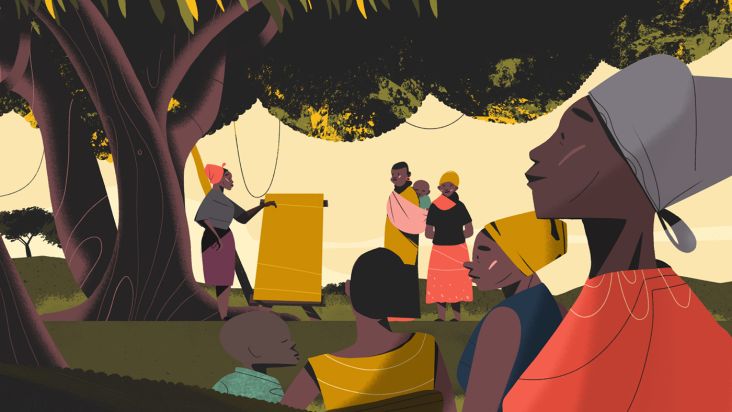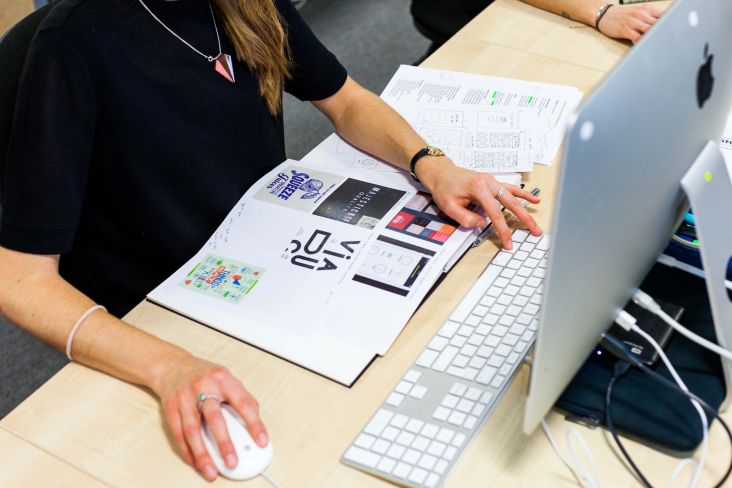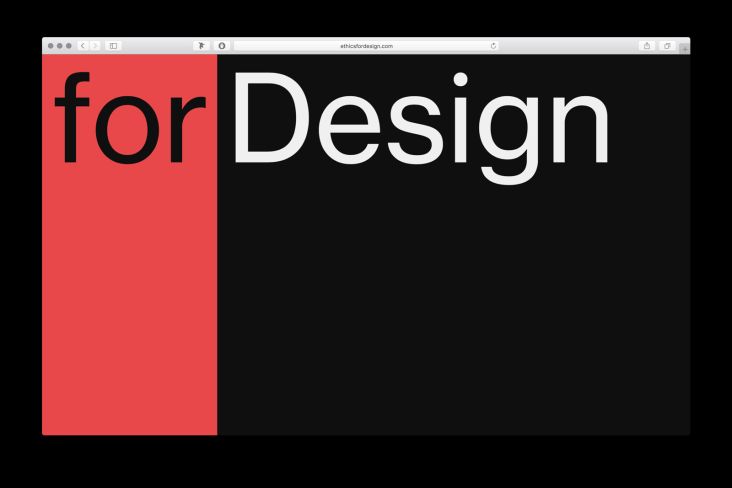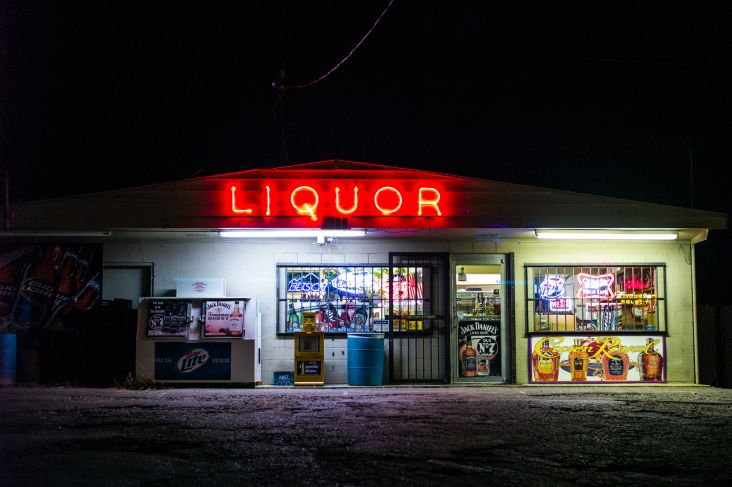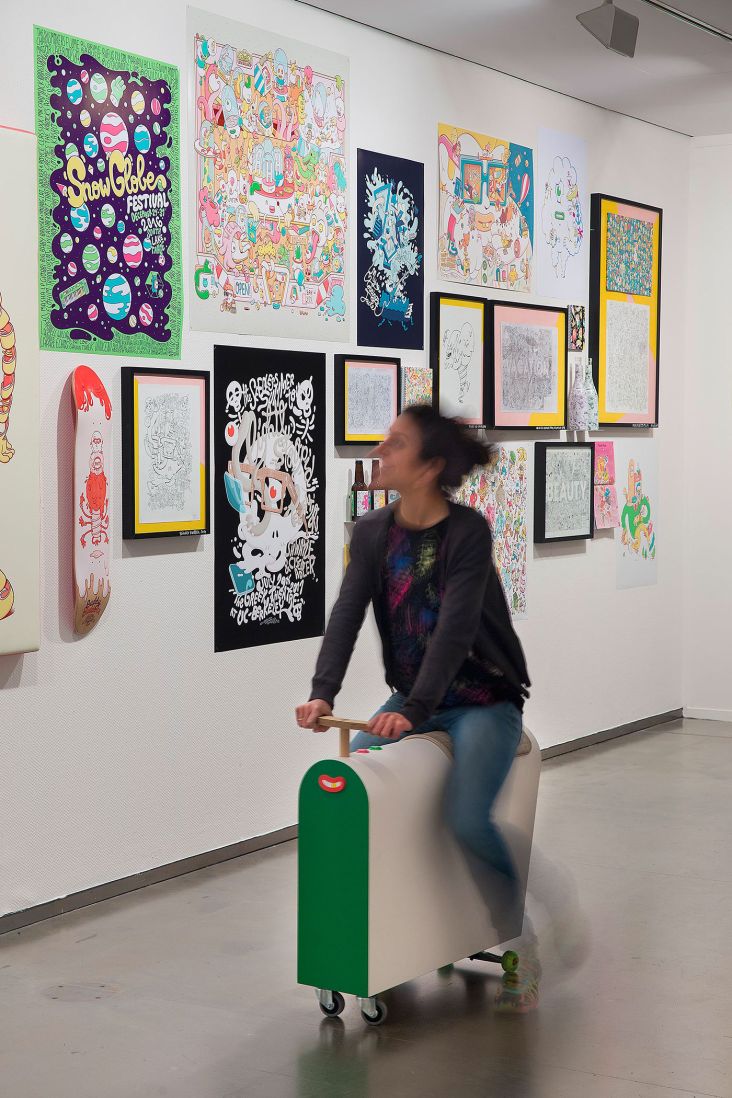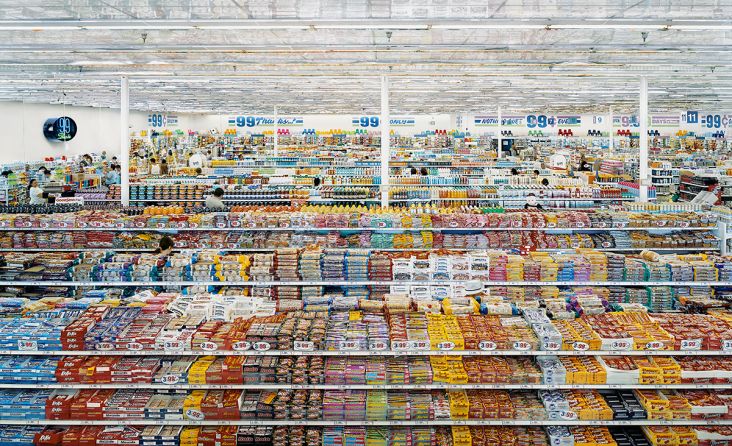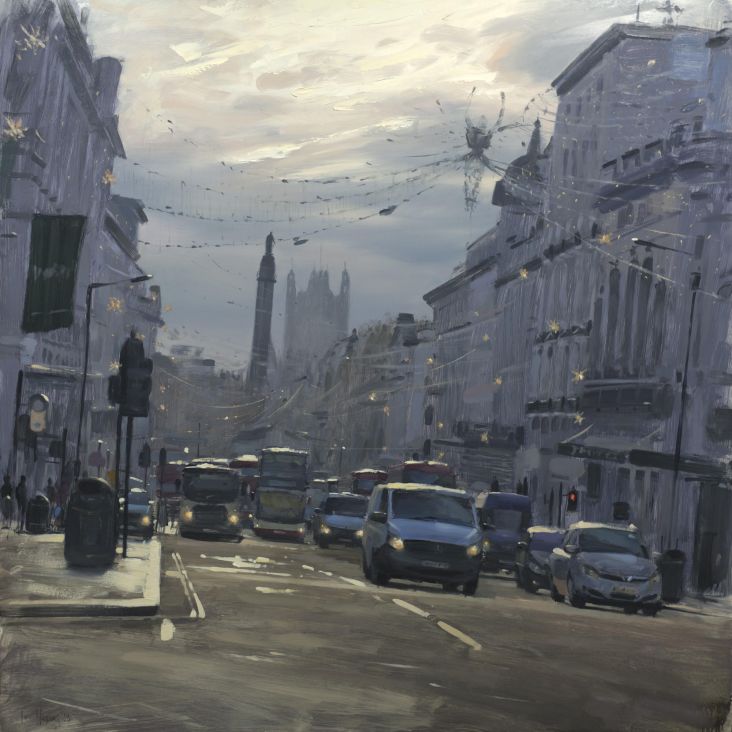Ben Tallon on graphic activism, avoiding trends and embracing creativity across the board
Ben Tallon is a man of many talents. A graphic artist, activist, successful podcast host, author and hand-painted lettering specialist, he kicked off his career with clients such as the Guardian and WWE.

And his unmistakable graphic style has been catching the eye of creative directors worldwide ever since.
The award-winning illustrator also hosts his own podcast Arrest All Mimics, which focuses on original thinking and innovation, and is currently working on a follow up to his first book Champagne and Wax Crayons. He's even just moved from London to Manchester and has quickly become part of the local creative community.
With such vast and varied experience in the creative industries, and quite an interesting 2018 in store, we grilled Ben on his career to date, alongside his tips and tricks for becoming a thriving freelancer.
First of all, how did you get started in design?
I’ve drawn since childhood and always had an inherent fascination with the way things looked. Albums, magazines, and posters were early windows into a wider visual culture than what was available in a small northern town. I drew a lot and my mother studied art at college. I was encouraged but never pressured to embrace my artistic side, so in my own time drew wrestlers, footballers and made Leeds United scrapbooks from newspaper clippings, taking great care over the layout.
At school I felt very apathetic about everything outside of sport and English, art included because it was taught in such a dull manner. After realising I was pretty average at football, drawing was the only thing left that did anything for me.
Thanks to one teacher who made a phone call on my behalf, I managed to land my work experience placement at the local art college and eventually studied there thanks to impressing a design tutor with a drawing of Cloud from Final Fantasy 7 on the Playstation. From then, I took the path through university, studying illustration and then putting in the hard yards over two years working in various temporary full-time jobs whilst setting up as a freelance illustrator.
You specialise in illustration and hand painted lettering, the latter of which is quite niche. Was it a conscious decision to go down this route?
I graduated from illustration with the frightening knowledge that only a handful of jobs existed, so knew I’d have to make everything happen for myself as a freelancer. I didn’t really know what that would entail but had learned from lecturers that editorial illustration was a good entry point, thanks to the more disposable nature of magazines and newspapers than other areas such as advertising or packaging. So I got my early breaks there. Ironically, the openings happened thanks to my passion for sport, with When Saturday Comes and The Guardian.
With the lettering, I was asked by the creative director of WWE if I could paint him a header for a feature on Dwayne ‘The Rock’ Johnson and some phrases for a poster of John Cena. I said yes and drastically underestimated how hard it is to make it look good. Thankfully we got somewhere close and he suggested that if I practised, I could find lettering work because there are not too many people who can do it well. So I took his advice and eventually split my portfolio, forming my specialist lettering service to support the illustration.
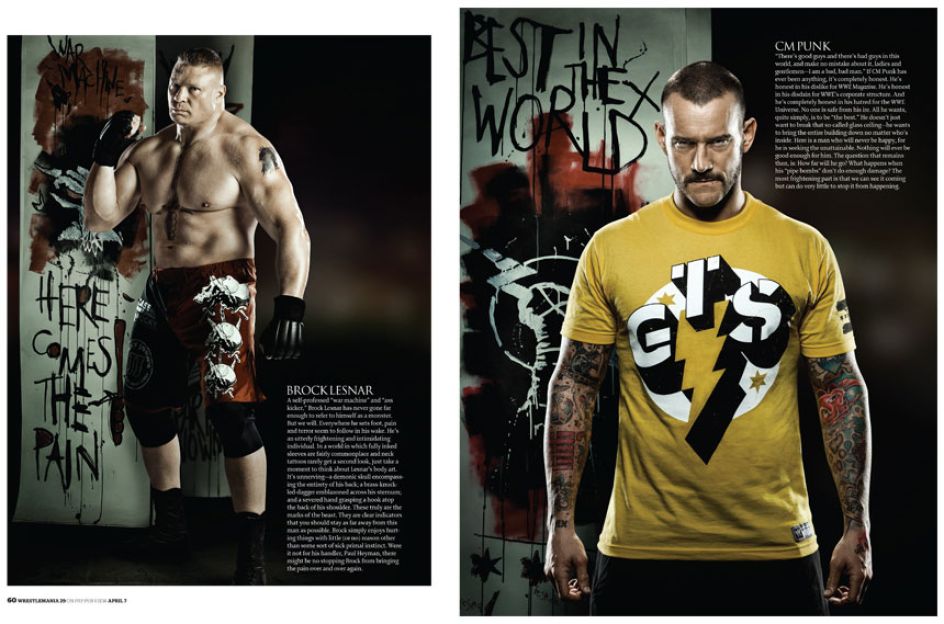
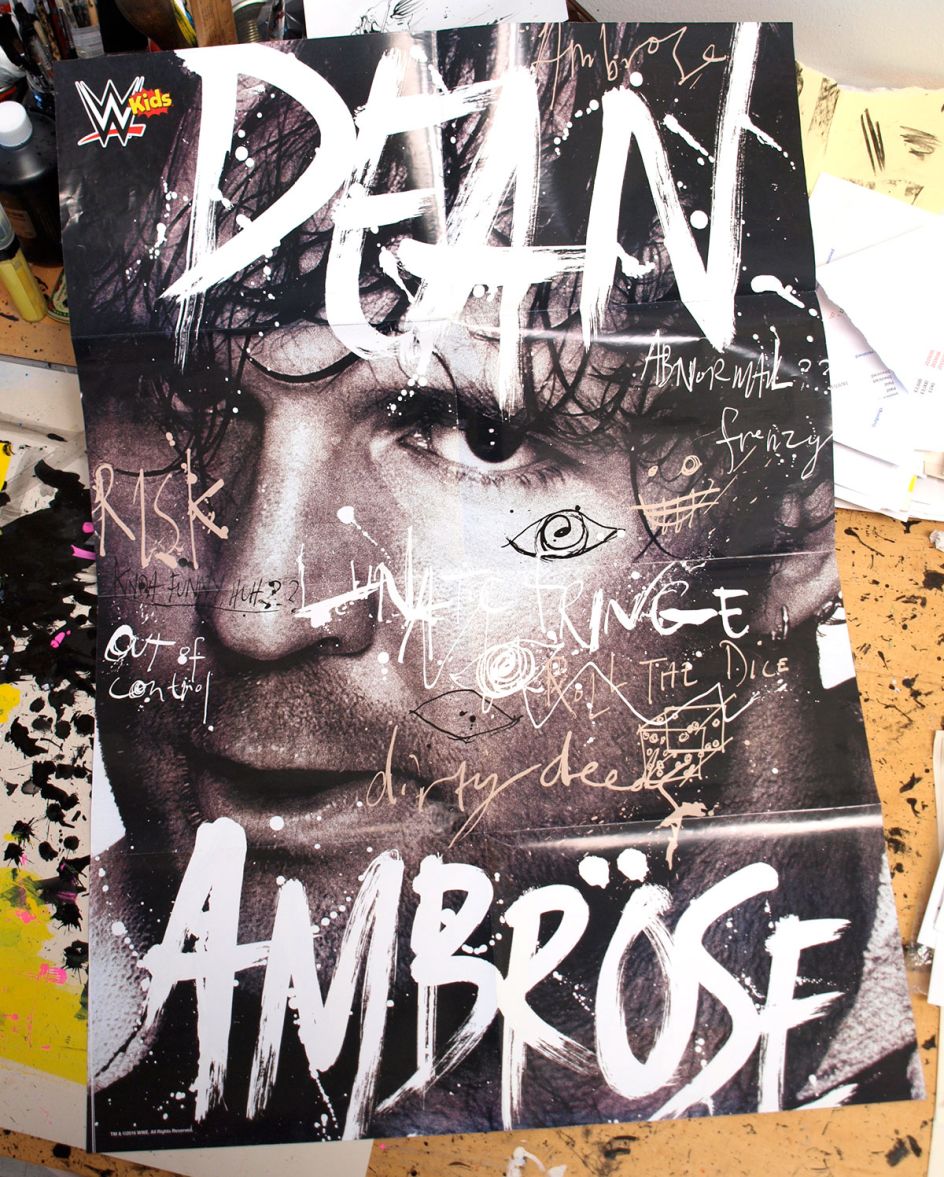
Since then you’ve worked with a wealth of internationally renowned clients – how did you go about securing work in the early days?
A combination of perseverance in doggedly approaching people who I thought might have a use for my work, taking the time to focus my self-initiated work on a subject matter I knew well.
Relationships are key. I placed great importance on compensating for the fact I was new to the industry by pushing for face-to-face meetings with art directors and editors, spending a week at a time in London, staying at cheap hostels in 10-bed dorms.
I worried that I would be lost in a very saturated competition field otherwise. In person, I felt I could better convey my passion for art and design and more importantly, show professionalism. There are a lot of flaky people who are talented but cannot hit a deadline, so reliability is huge in gaining trust. Once I had a few known brands on my client list, I ran them into the ground to attract other work.
Did you face any challenges when you first started working for yourself? And how did you overcome them?
There were many challenges. Confidence is low in those early days and the rejection rate is sky high. It makes you question what you’re doing on a daily basis but critically for me, moving into a shared workspace with other artistic people was a turning point. Feedback, camaraderie, laughs, and company all came in abundance and the battles became a little easier. I shared with Danny Allison who had a couple of years experience on me. He passed on a lot of knowledge and to see someone already out there doing it, first hand, made it all seem a little less intimidating. I’m very competitive too, so I had to have some of what he had for myself!
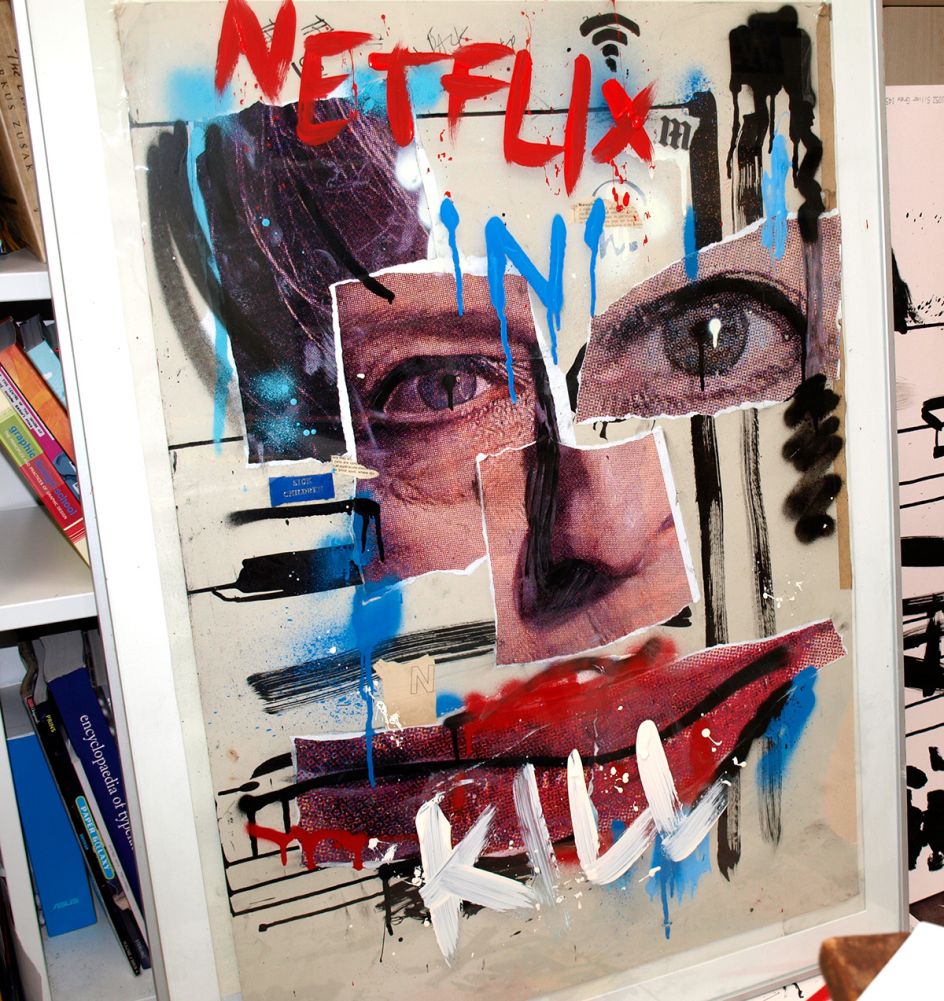
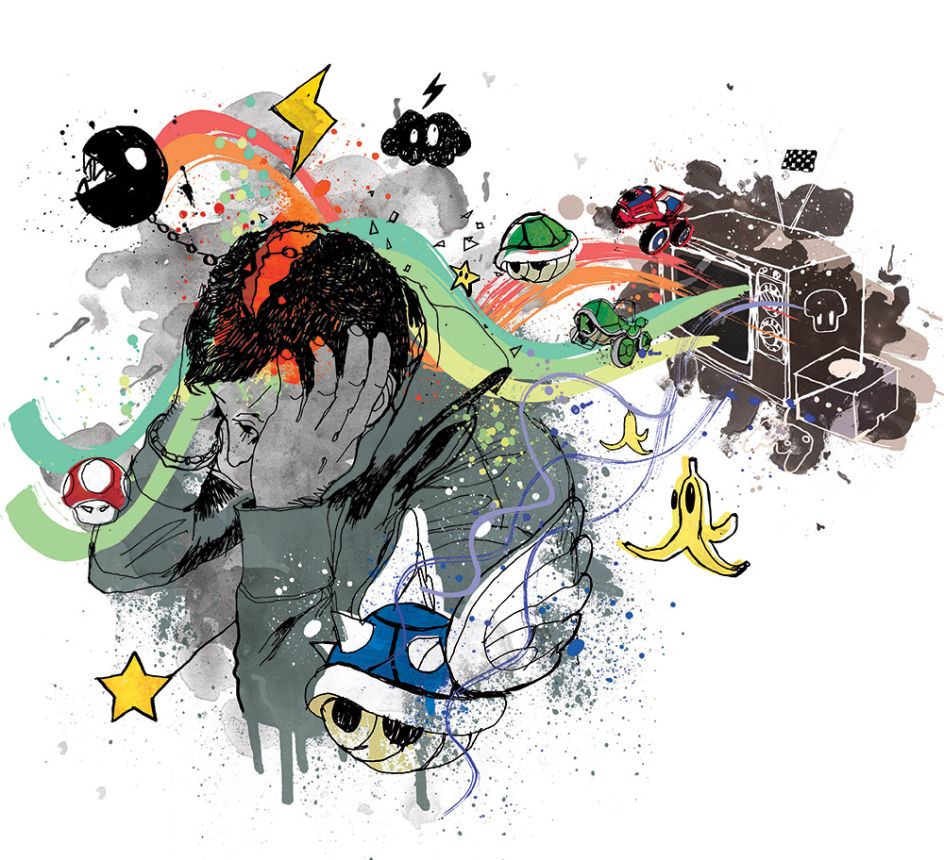
Alongside your illustration work you’ve also founded a successful podcast, Arrest All Mimics, which has just aired its 100th episode – huge congratulations. How has this supported your client work? Are the two intertwined?
Thank you. As is the way with many things in the creative industries, a sequence of unplanned events led to the podcast. After two years of full-time freelancing as an illustrator, I hit a six-week dry spell and took to Tumblr to vent on a blog. I tried to write openly and honestly and to my surprise, people started to read and respond to my musings.
Some told me the writing style was strong and the honesty refreshing, so I kept it up even when the work came back in. It turned out an editor who commissioned me for a regular magazine illustration slot was now working at LID publishing in Covent Garden and loved what had now amounted to enough of a story for a manuscript.
It became my debut book, Champagne and Wax Crayons: Riding the Madness of the Creative Industries. This earned me a lot of lectures and opinion columns in creative journals and following a chat with Harry Lyon-Smith, the MD of my illustration agency, I took his suggestion that I might be in a good position to start a podcast on board.
It’s easy and affordable to get the kit to do it and I found many people forthcoming in talking about their work and story. Thanks to those early days of carving out work as an illustrator, my tenacity paid off and I’ve been able to spend time with a ludicrous amount of talented people right across the arts, hearing their journey. It’s alongside college and university as a learning experience for me.
Embrace your inner weirdo and explore the things that you do for pleasure, with passion. Individuality is the ultimate currency in this industry and nobody can replicate your journey.
You’re passionate about ‘graphic activism’ and the idea that graphic artists should connect with charities to strengthen important messages. In a recent campaign, you responded to the government’s ruling that animals should be recognised as not being sentient. And in your latest podcast, you interviewed Olivier Kugler. Can you please talk us through your thoughts around this concept?
I wrote about graphic activism for my dissertation. I was passionate about the likes of Banksy, Ken Garland, Jonathan Barnbrook and Blek Le Rat, people who were out there supporting causes they cared about and making sense of social issues that meant something to them. I’ve always had an antagonistic, mischievous side and I can’t sit quietly and watch injustice, mass idiocy and deceit going unchecked.
My early illustration work often dealt with such ills and it’s also my way of releasing grievances and negative emotions. I’ve worked with many charities and created much work to try support causes I care about because I feel visual communication is incredibly powerful and can spread the right message to counter the raft of bullshit currently dividing people.
Olivier Kugler is creating some very important work. He’s made a career from his reportage illustration work, in Burkina Faso, the refugee camps of Kos, Calais and Iraqi Kurdistan so I felt he would be a wonderful 100th episode guest. His new book, Escaping Wars and Waves reminds you of the fact that despite much of the media attempting to present these poor people as statistics, they are human beings, just trying to survive and support their families. I wanted to make people aware of it and celebrate its importance.
I don’t believe that we all have a responsibility to create such work, but it’s important to remember just how powerful our skills are and consider the balance of where we’re applying them. We have a government in power, making psychedelic decisions that fly directly in the face of science, in the case of the animal sentience vote. I can’t surrender myself to Netflix and ignorance when that kind of madness is going unchecked because it will affect every one of us sooner or later.
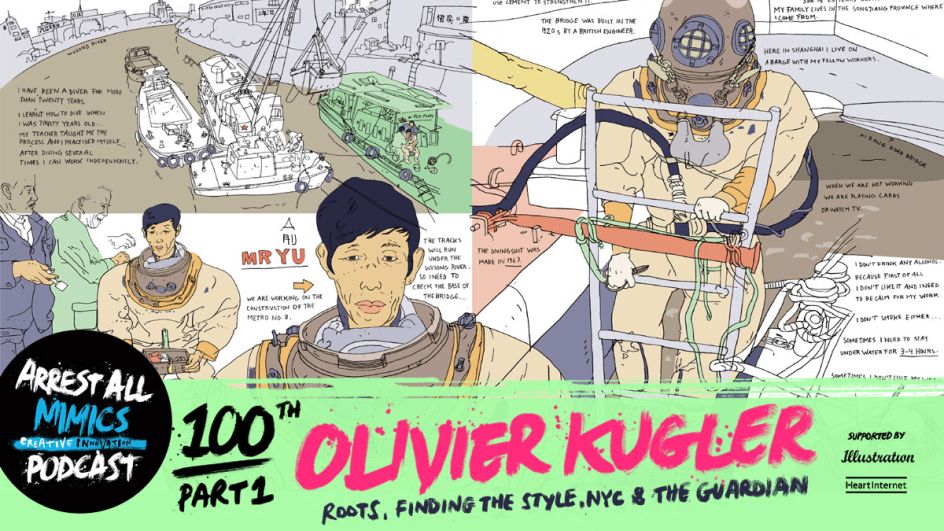
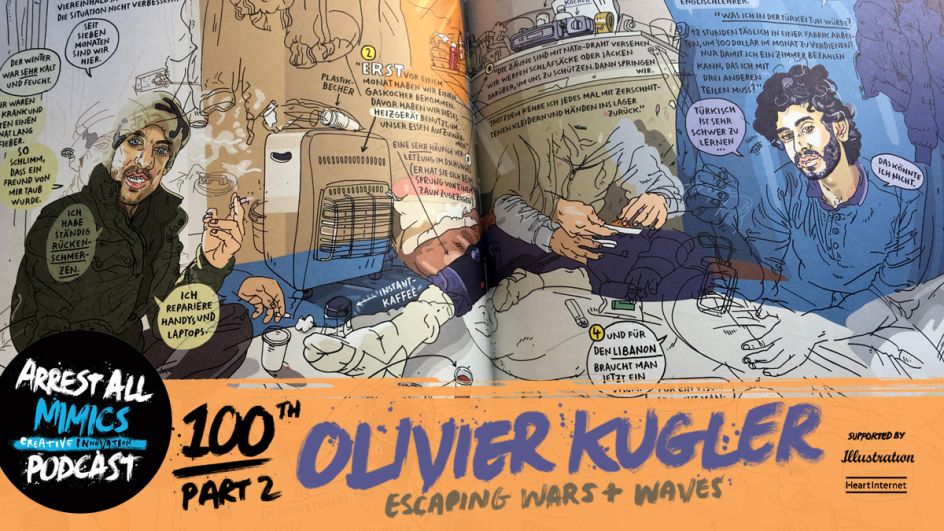
Is there a particular project you’ve worked on that you are most proud of?
I created and directed and campaign on behalf of CALM, a superb charity working to prevent suicide, which is the single biggest killer of young men in the UK. It broke my heart to learn that. As someone who finds great belonging, empowerment and focuses on my creative work, I wanted to further explore the emotional benefits of artistic expression.
With the help of photographer Danny Allison, designer Sam Price and electronic musician and producer, Dirty Freud, we set about conducting a series of interviews with people across the arts, to see how they felt about this. Stephen Merchant, Danny Dyer, Ian Stone, Mick Foley and Ken Garland all gave their time to discuss and the response was stunning. It pushed me to my limits, having never carried out such a beast of a project or interviewed anyone in my life, but the outcome was humbling. On a more self-indulgent level the set designs I created for WWE. It was a childhood dream realised!
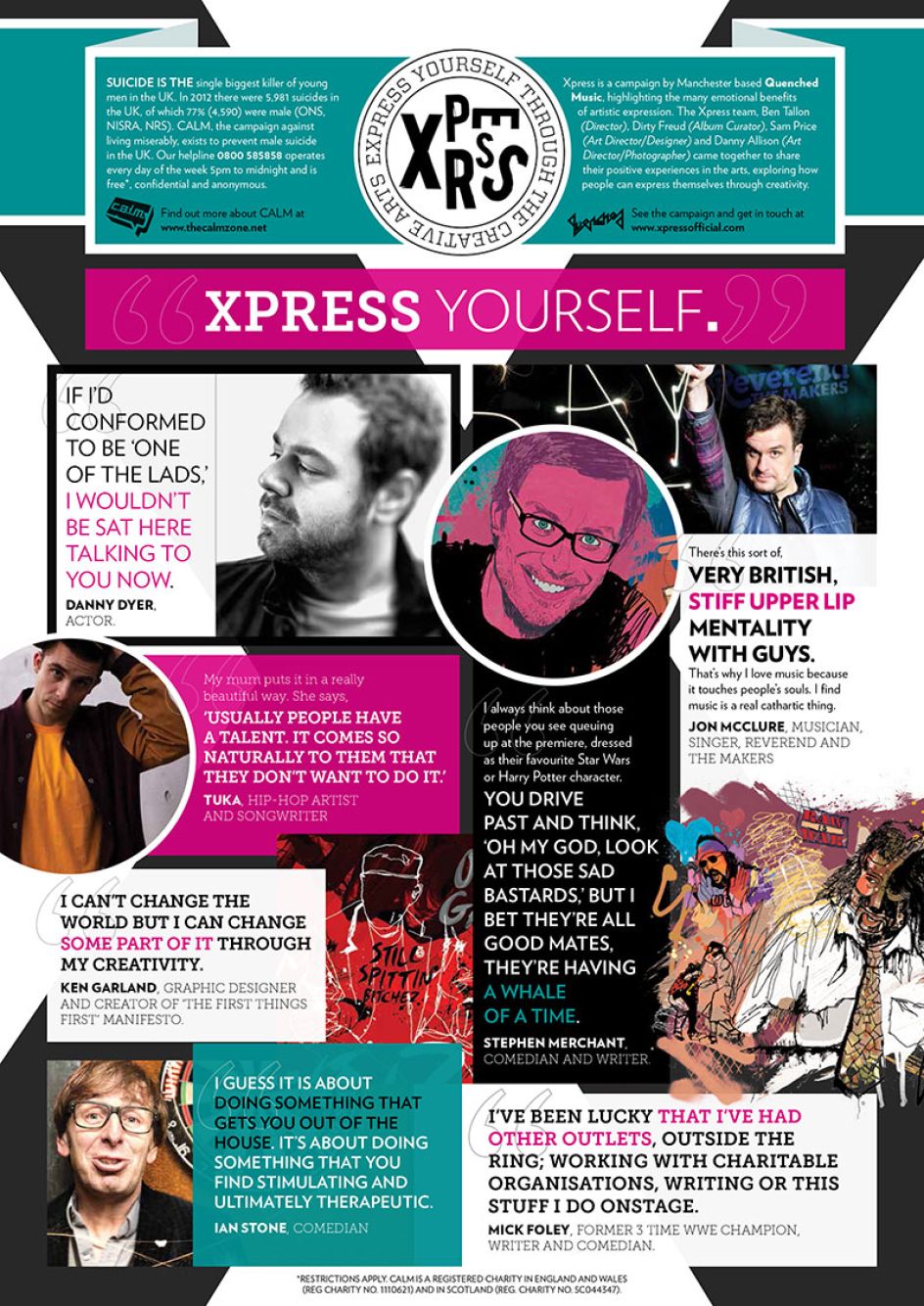
You’re currently working on your second book, following the release of your first, Champagne and Wax Crayons, in 2015. How difficult is it switching from being creative in a visual sense, to working with words?
It’s tricky. Drawing comes as second nature, but writing requires a different headspace. You really have to feel it and ride the momentum. Writer’s block is very real and I’ve known confidence bottom out mid-sentence for no apparent reason. But I’m very passionate about it.
Just like the first book, it’s all very speculative, but you have to bet on yourself and if you don’t try, it’s certainly not going to happen. The common thread to everything I create is that it’s very raw and human. If I try to polish anything, it falls apart. It took time to embrace the imperfections, but they’re the underpinning factor in all my work, no matter the medium.
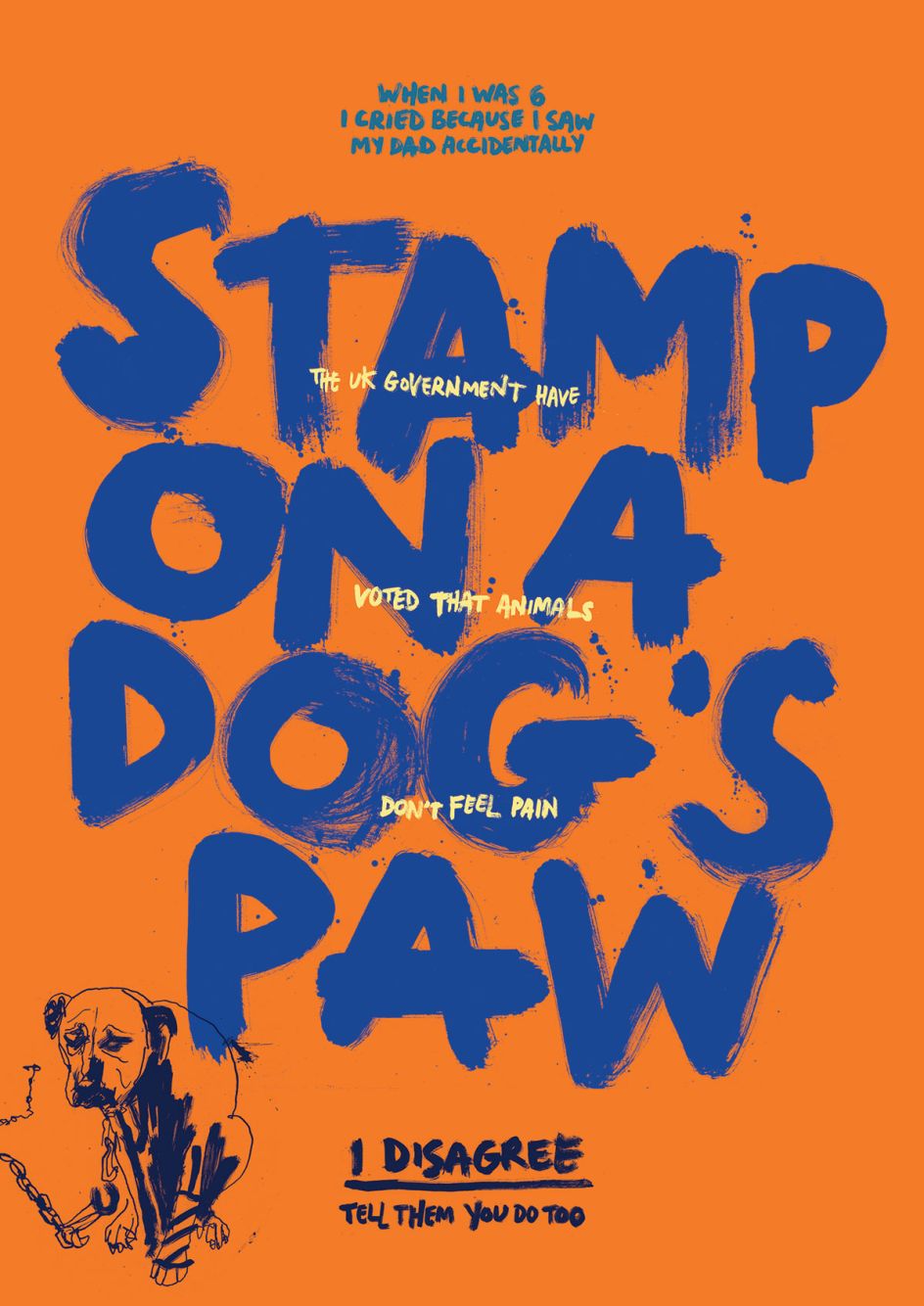
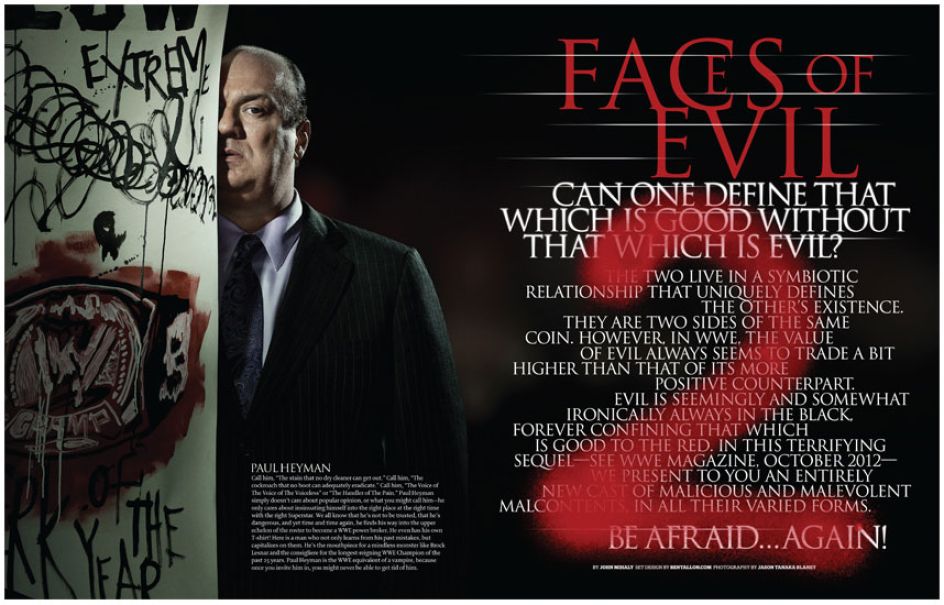
Do you prefer one creative medium to another?
No. The variation is something I need to keep everything fresh. I love all of it, broadcasting, writing, drawing, illustration, set design, fine art, lecturing, but if I spend too long at any one thing, I don’t feel challenged or inspired.
What three key pieces of advice would you give to creative freelancers starting out?
Avoid trends like the plague. They come and go.
Build relationships, seek criticism and compete only with yourself.
Comparing yourself to others is futile and destructive.
You’ve recently moved from London to Manchester – have you found the creative scene is much different?
London was a lot of fun and a huge step forward for me. I threw myself in the deep end, getting involved in all kinds of projects. But it burned me out eventually. The scale of it makes it hard to build a sustainable community and that’s important to me.
It’s also very difficult for independent artists and designers to find affordable workspace anywhere near central. Manchester has a great balance of city benefits and community. I have more headspace here and it forces me to be a little more selective with what I say yes to in London.
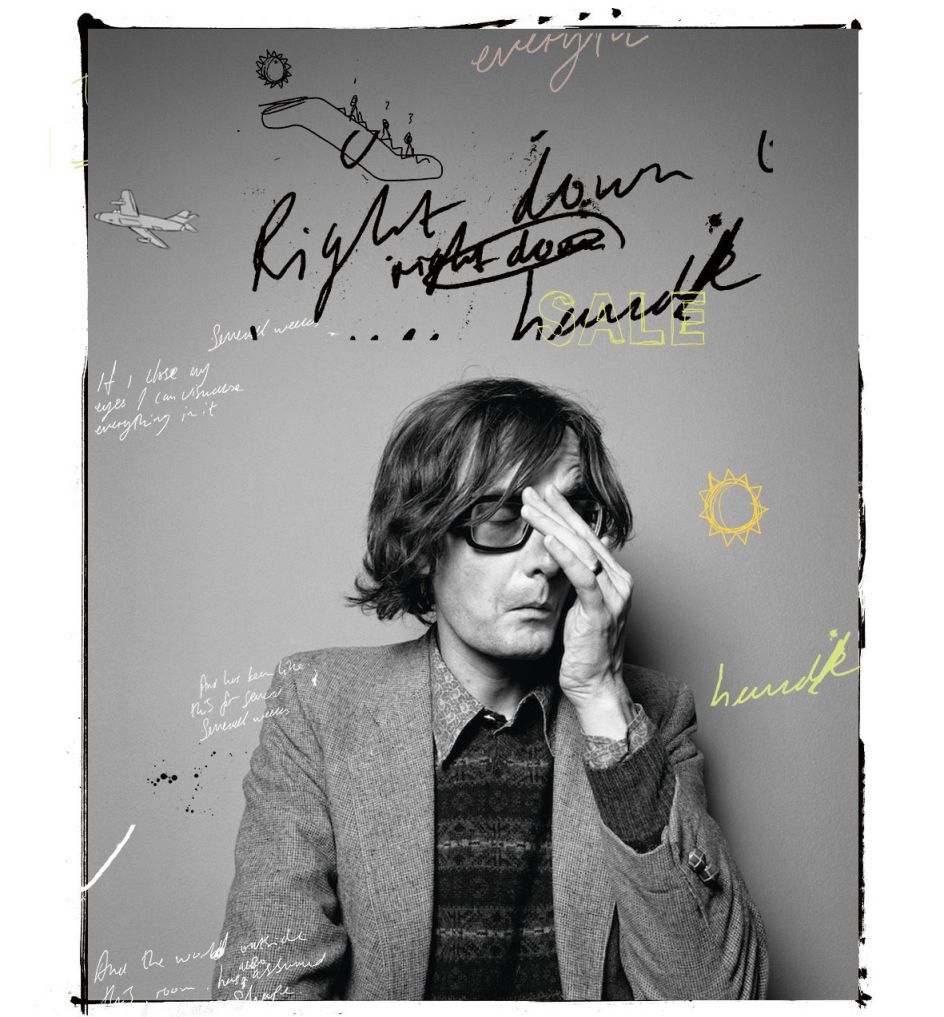
And finally, what’s next?
I’m working on two books, fiction writing, an exhibition with music photographer Andy Cotterill from our ongoing collaboration and there are several nice illustration projects lined up. The podcast continues to evolve so who knows who I’ll get to talk to for that! I’m coming up on my 10th year as a full-time freelancer so, with a greater sense of what I’m about, it’s time to really focus my energies on what I feel matters.
You can check out Ben’s work at bentallon.com, listen to Arrest All Mimics on Apple Podcasts and at soundcloud.com/arrestallmimics and enjoy his book, Champagne and Wax Crayons.




 by Tüpokompanii](https://www.creativeboom.com/upload/articles/58/58684538770fb5b428dc1882f7a732f153500153_732.jpg)


 using <a href="https://www.ohnotype.co/fonts/obviously" target="_blank">Obviously</a> by Oh No Type Co., Art Director, Brand & Creative—Spotify](https://www.creativeboom.com/upload/articles/6e/6ed31eddc26fa563f213fc76d6993dab9231ffe4_732.jpg)








